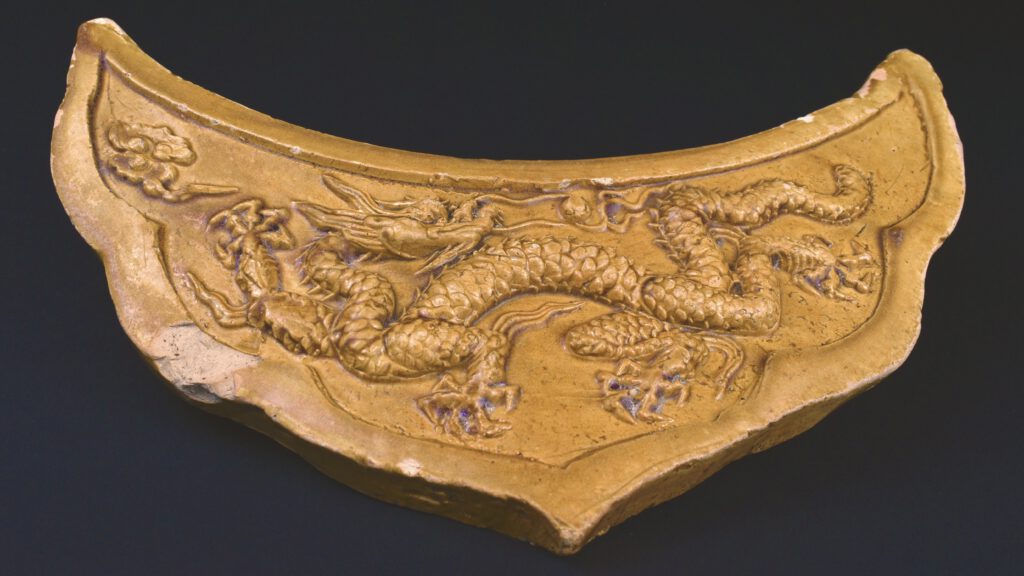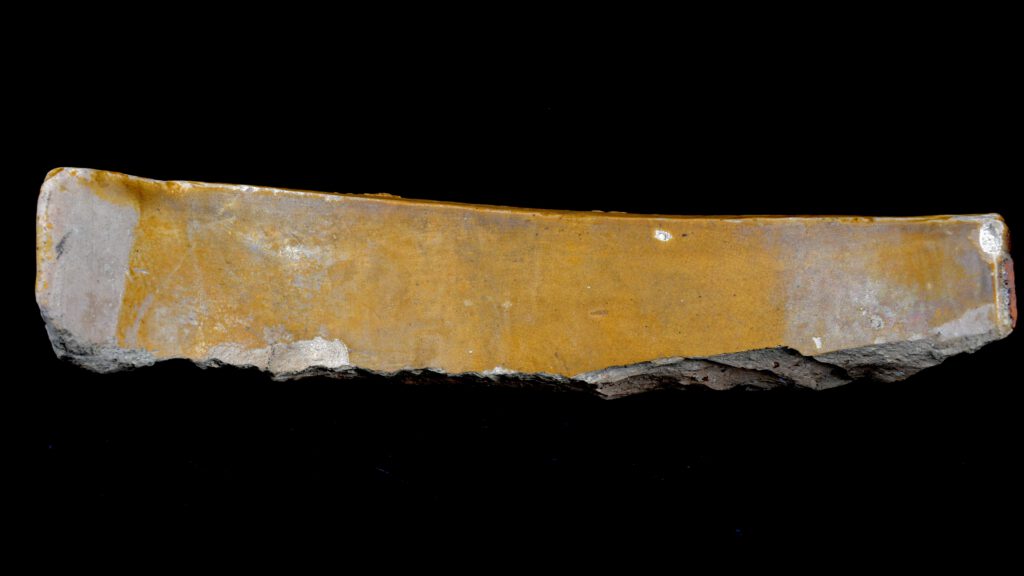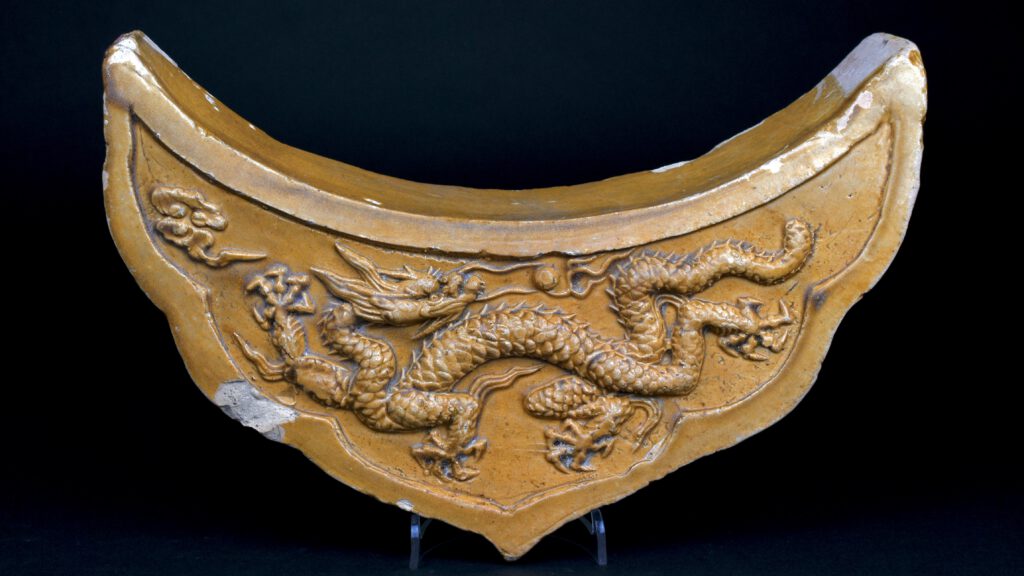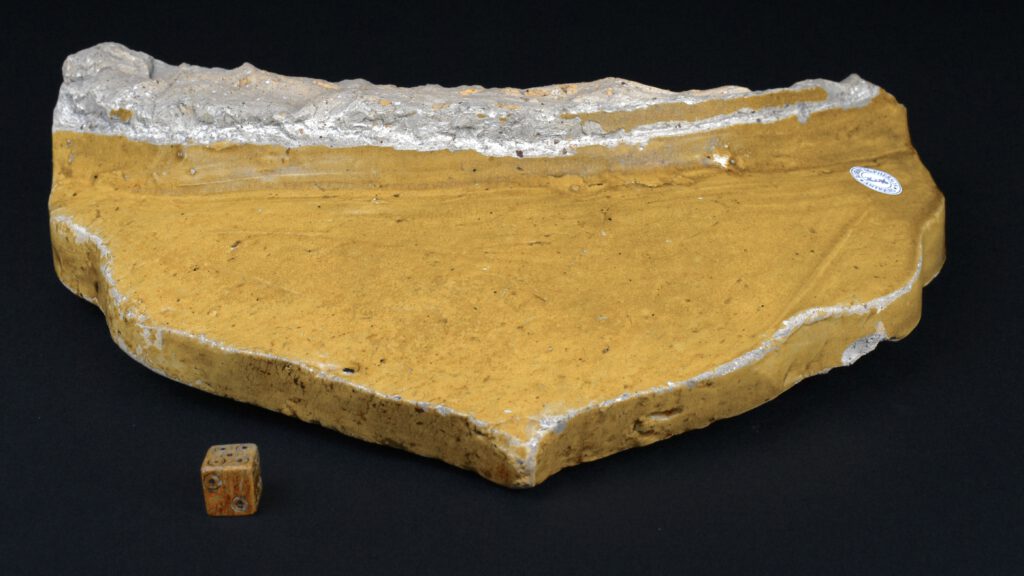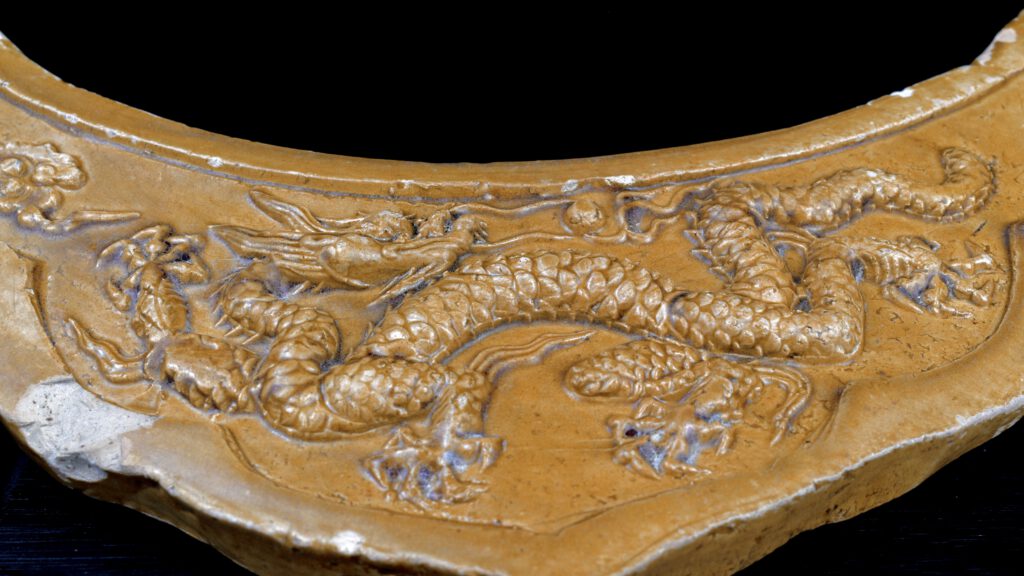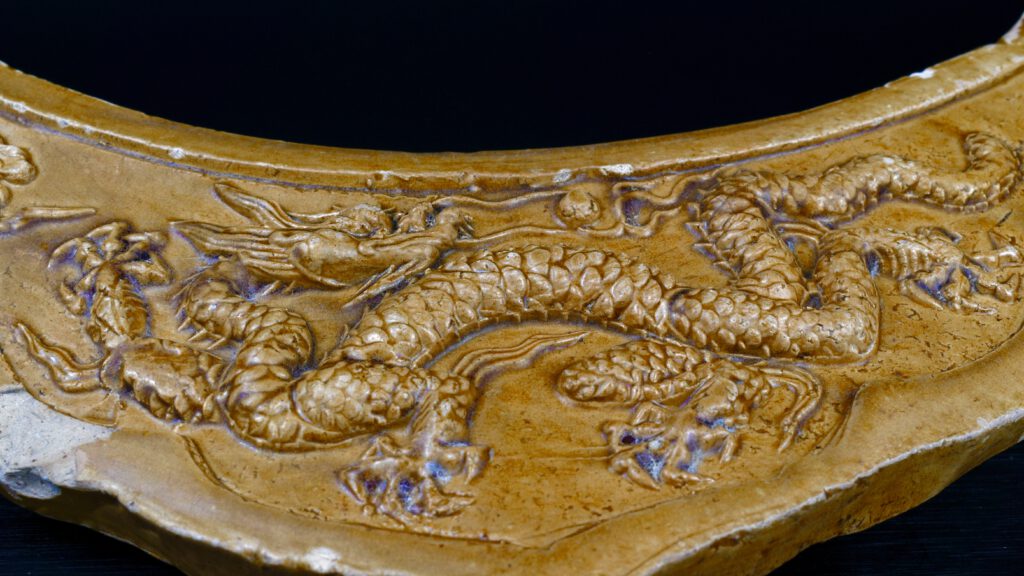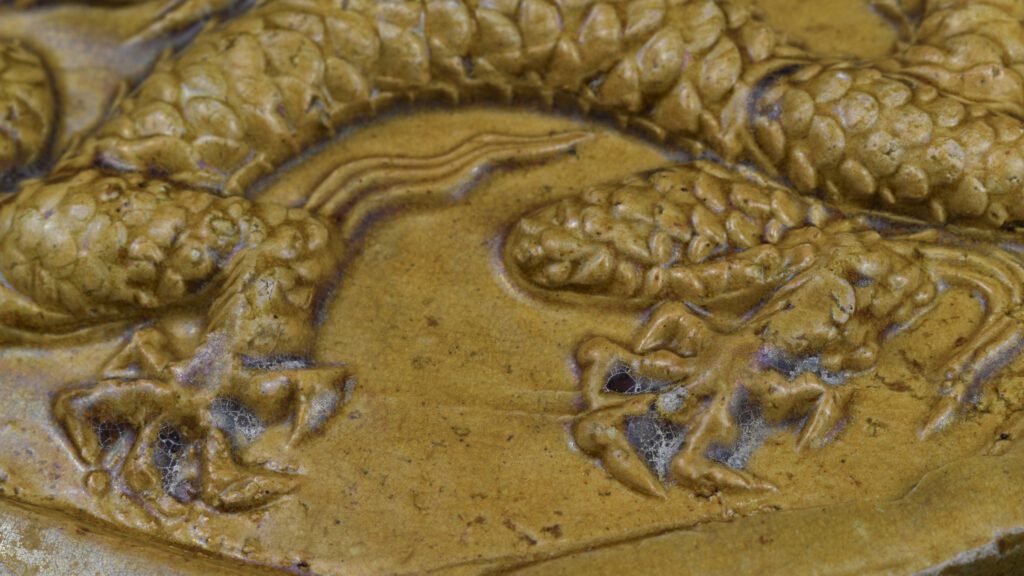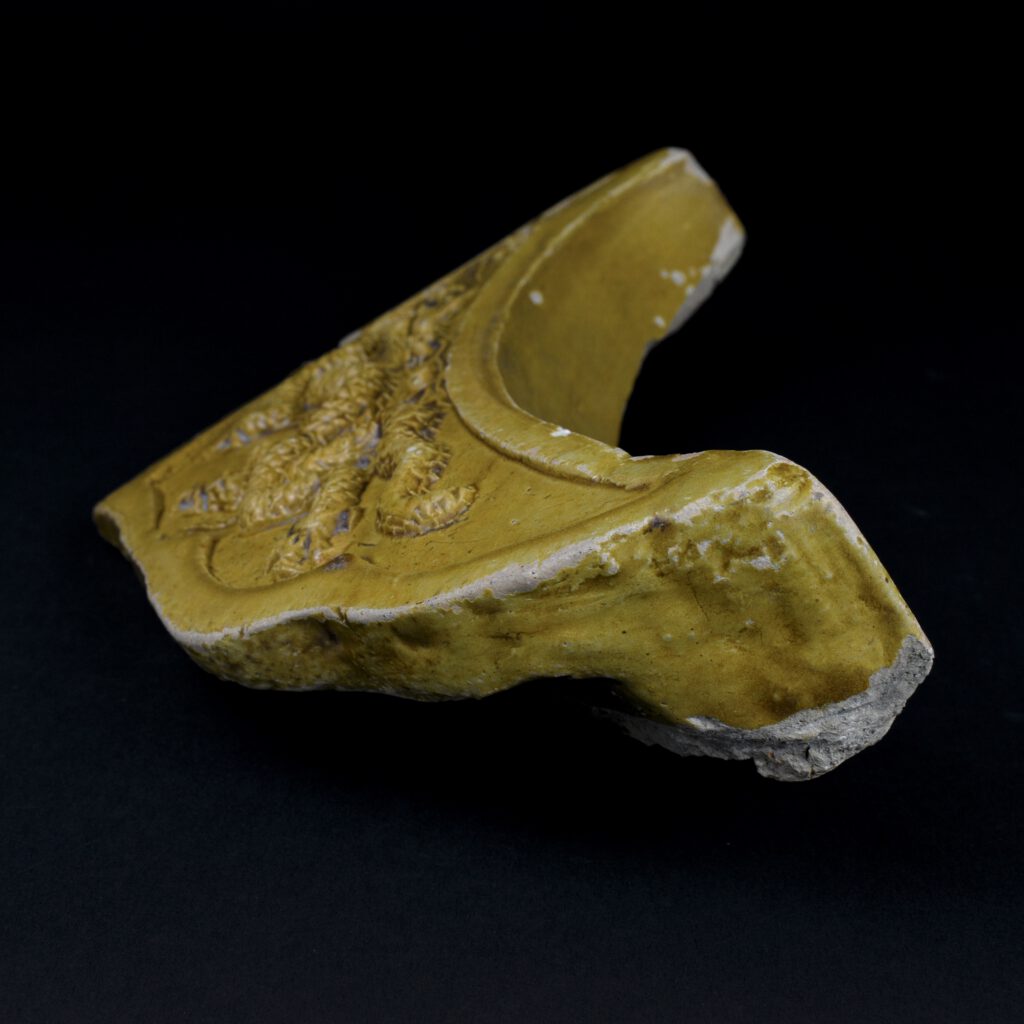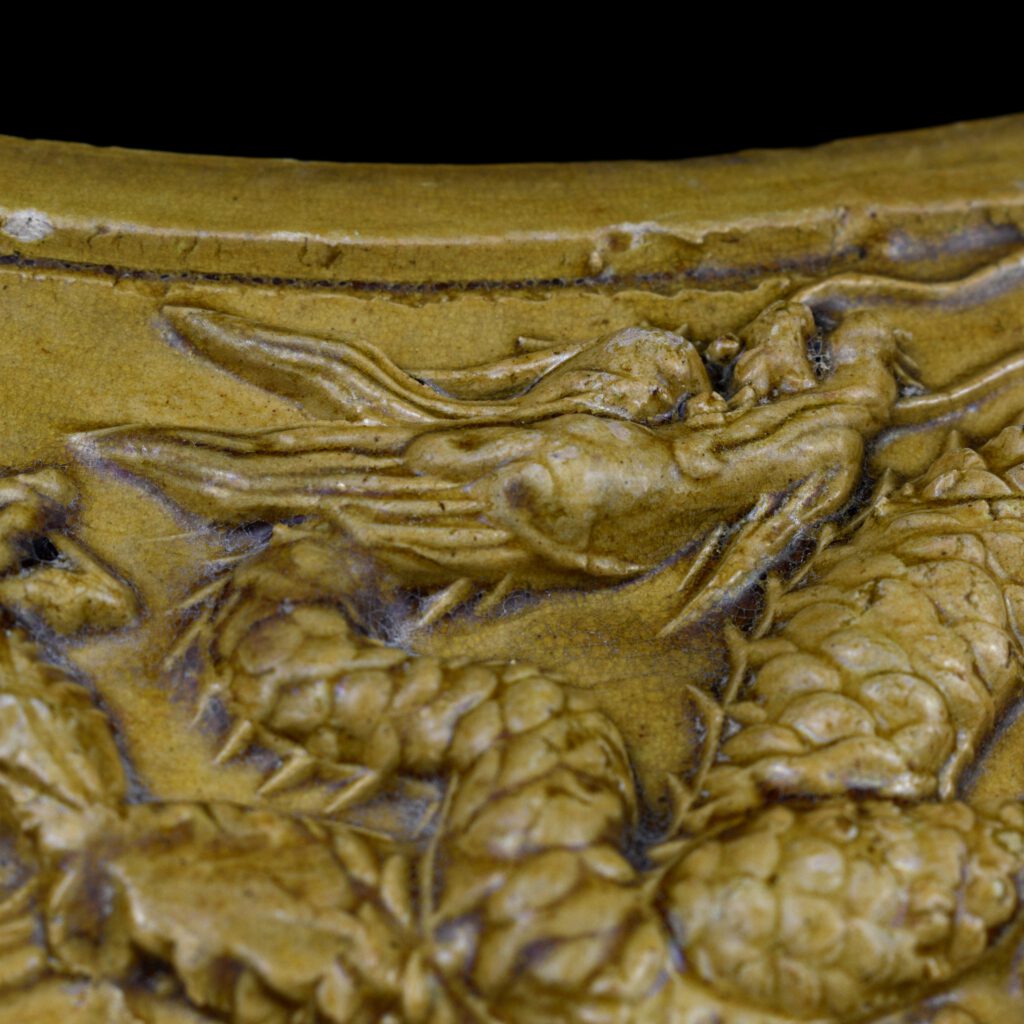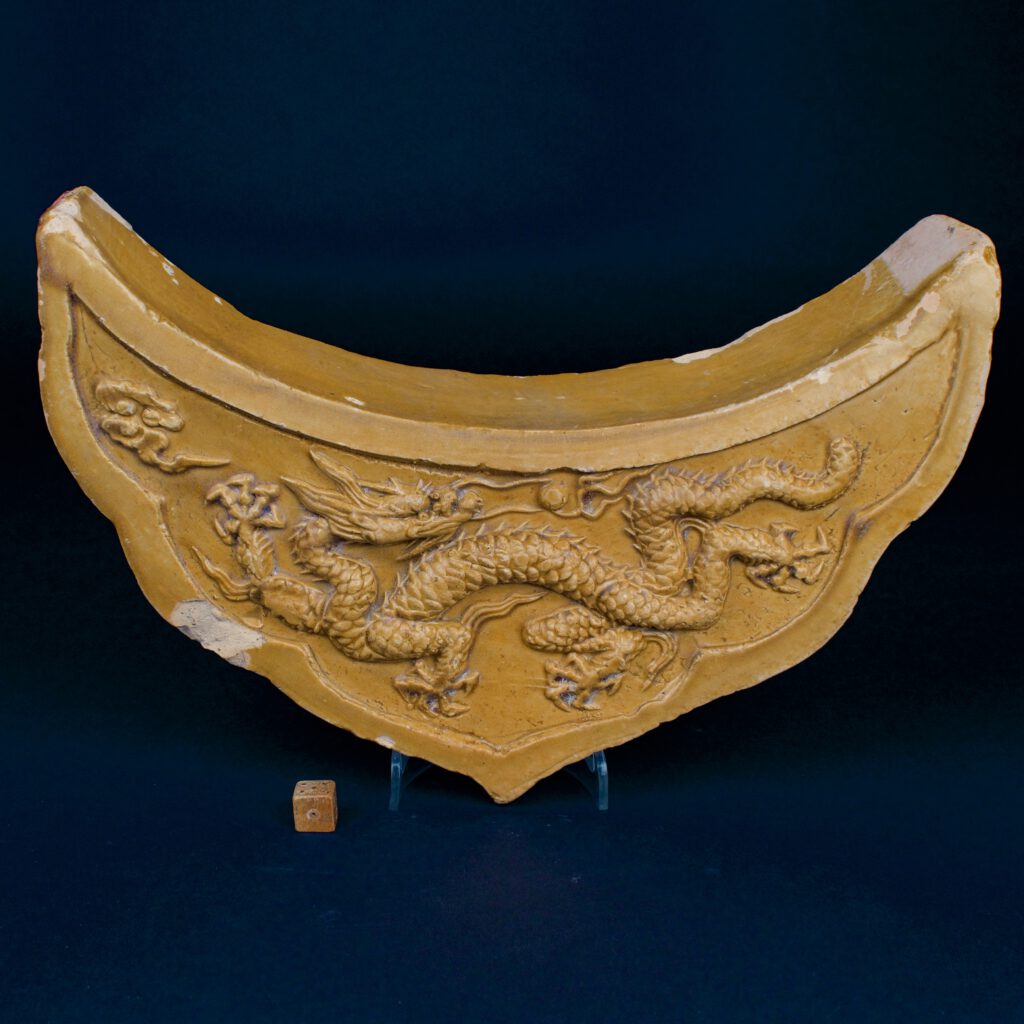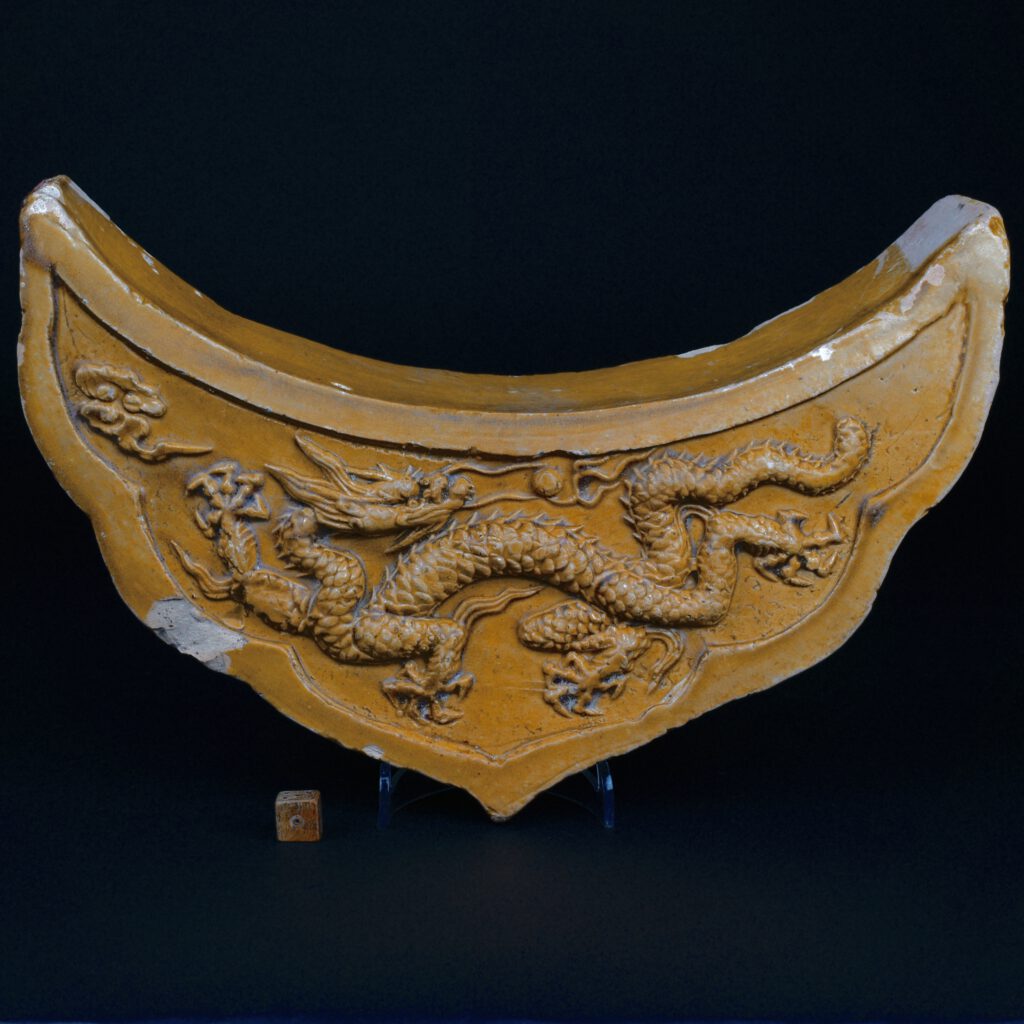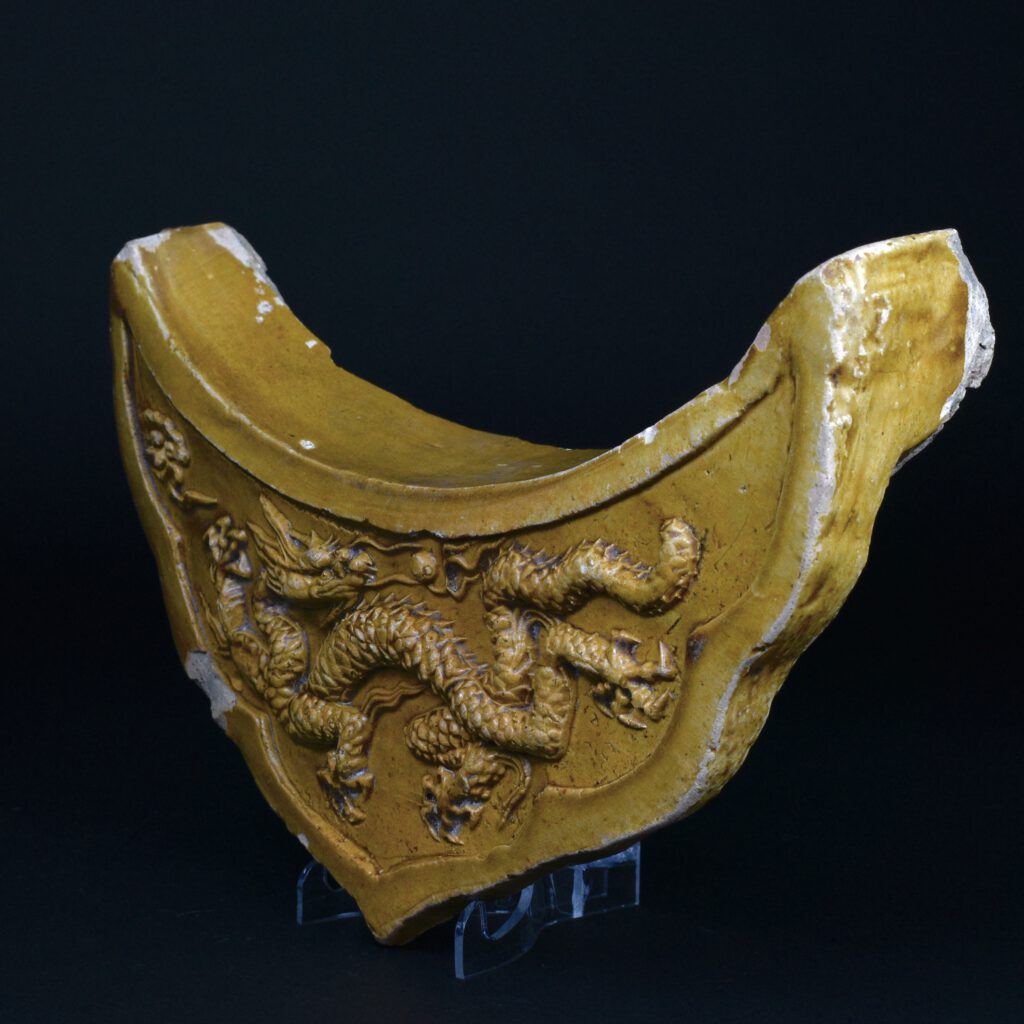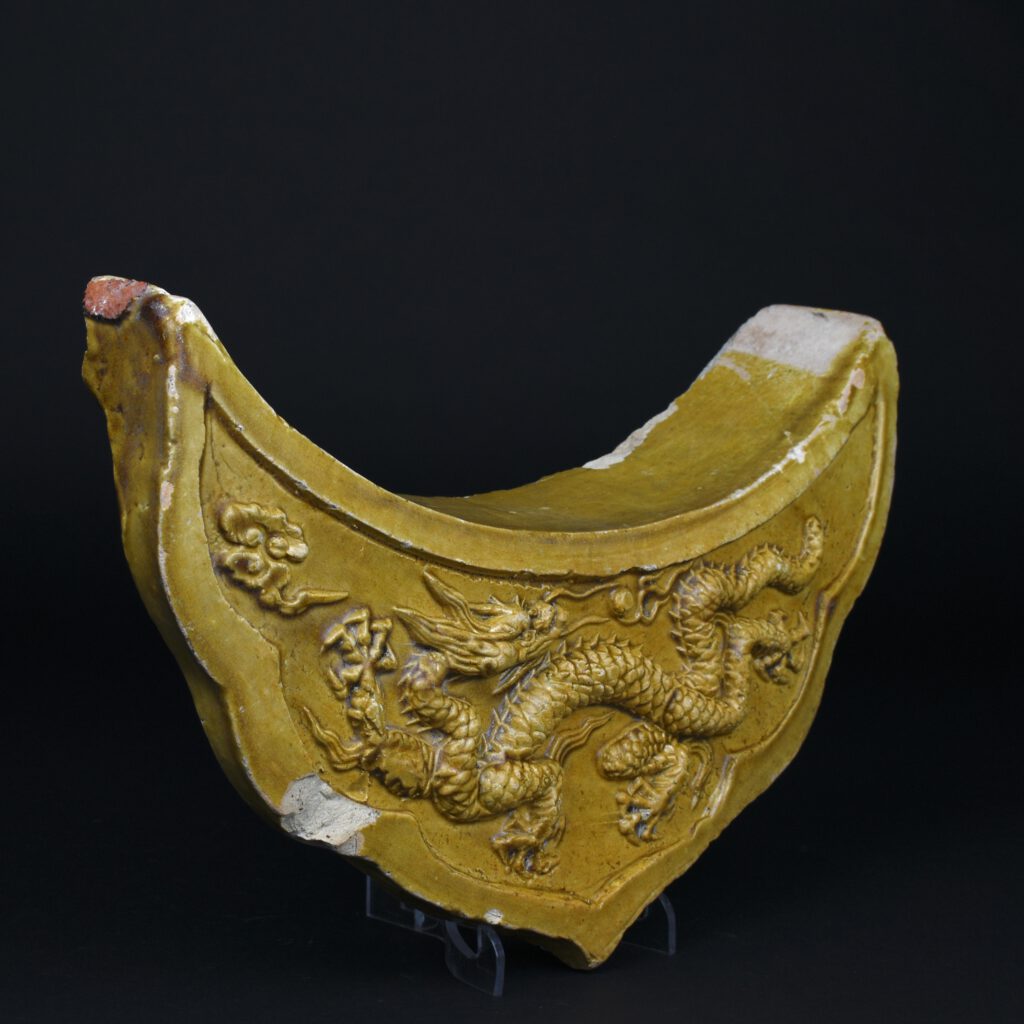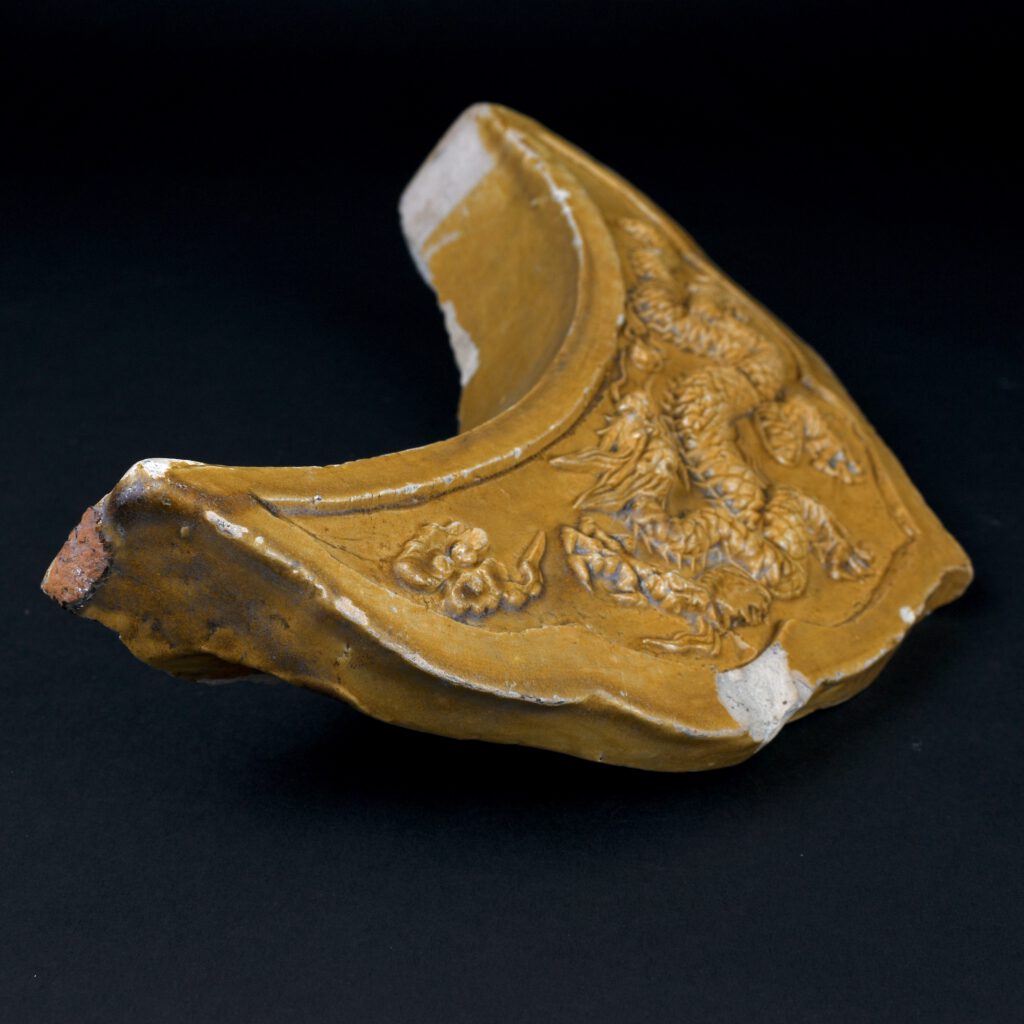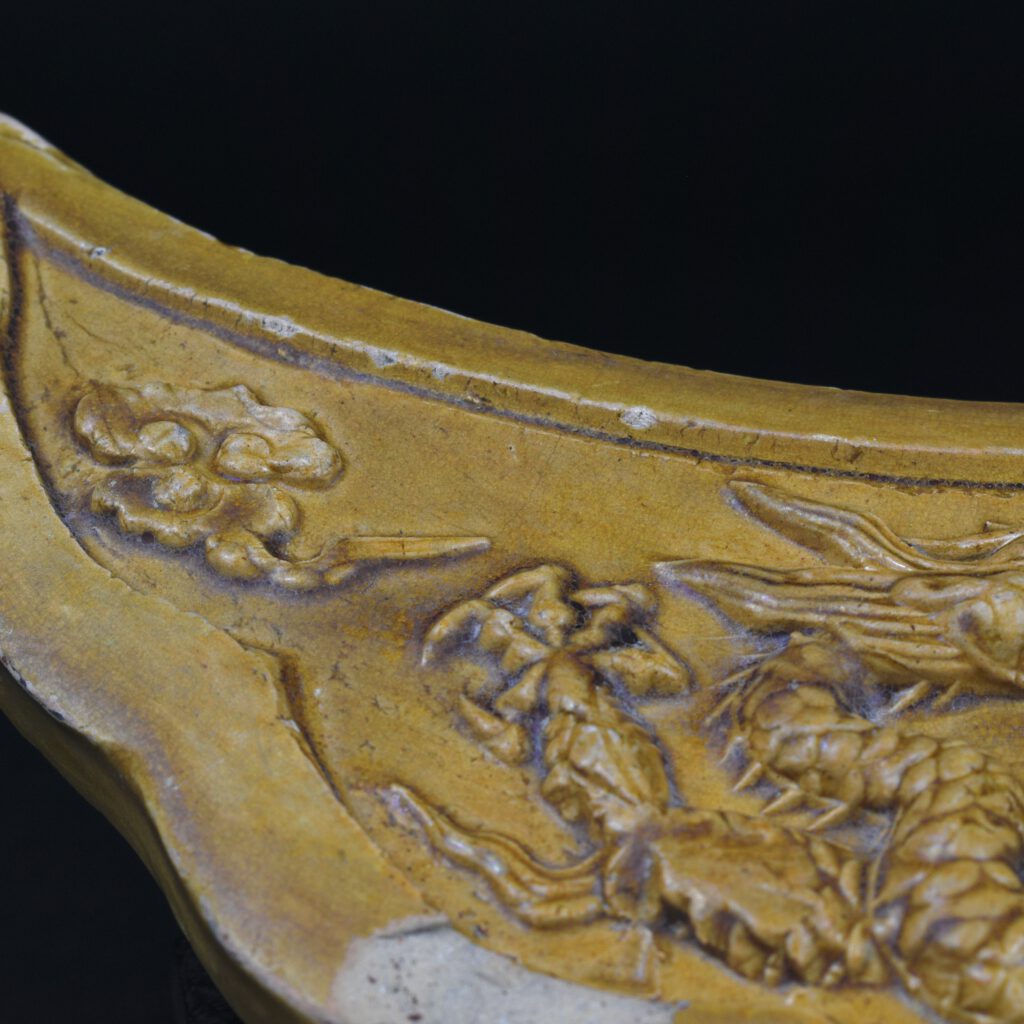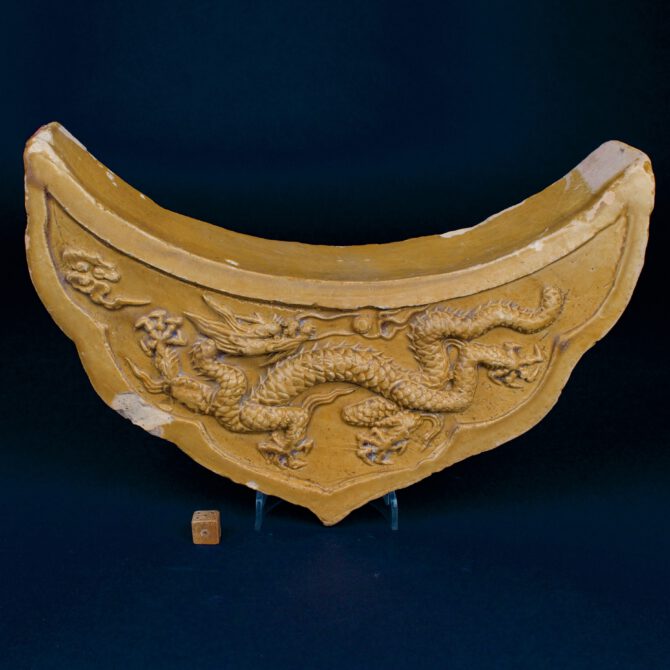
An Imperial Early Ming Pottery Tile, Probably From the Forbidden City, Beijing
A Rare Imperial Dishui tile probably from the Forbidden City, Beijing, Hongwu 1368–1398 (or perhaps Yongle period 1402 – 1424). This eave-end tile known in Chinese as a ‘water-dripper’ shows an imperial five claw dragon chasing a flaming pearl. The finely moulded design is glazed with a high flux lead-glaze coloured with yellow to denote it was made for an imperial building. From the Forbidden City, Beijing, see below for a very similar tile recovered from the Forbidden City in 1925. Probably made in Zhubaoshan near Yuhuatai, south Nanjing. For very similar Imperial Ming tiles see: Catalogue of Late Yuan and Ming Ceramics in the British Museum (Jessica Harrison-Hall.The British Museum Press, 2001. ISBN 0-7141-1488-X.) page 521, items 18:3, 18:4 and page 521 18:6. See other examples below the photograph gallery.
SOLD
- Condition
- A chip to the edge, small chips. The piece from the top of the tile that would key it into the building is missing
- Size
- Length : 26 cm (10 1/4 inches)
- Provenance
- N/A
- Stock number
- 26246
- References
- For very similar Imperial Ming tiles see: Catalogue of Late Yuan and Ming Ceramics in the British Museum (Jessica Harrison-Hall.The British Museum Press, 2001. ISBN 0-7141-1488-X.) page 521, items 18:3, 18:4 and page 521 18:6.
Information
Ming Pottery Roof Tiles Liuli Wa
According to traditional Chinese belief, roofs are platforms of communication between the words of the living and spirit realms. Consequently they were decorated to ward off evil and to act as a magnet for blessings and good fortune. Marco Polo was struck by the visual effect of these brightly coloured tiles, remarking while describing Khubilai Khan`s palace at Dadu (modern day Beijing) The roof is all ablaze with scarlet and green and blue and yellow and all the colours that are, so brilliant varnished that it glitters like crystal and the sparkle of it can be seen from far away. The Chinese had made ceramic tiles from early times but it was the Ming dynasty that saw the largest period of production, much of this was based in Shanxi Province at small family run kilns that passed down from generation to generation. Glazed tile-work is known in China as Liuli Wa, literally `roof-tile of glass`, a term dating back to the Tang Dynasty (618-906) although Tang tiles are now very rare. The soft earthenware used to make Ming tiles varies but often is uneven in its constitution with lots of grog. The tiles were mould made with a large amount of hand working, giving a completely hand-made look with lots of sharp detail and undercutting. They were lead glaze and low fired which means the glaze often runs. There were two basic colour schemes used Sancai (greens,yellows and browns) and the darker palette of Fahau (turquoise, blue and purple). The dating of Chinese glazed tiles, which were made over a long period of time with little change, is difficult. Knowing when the building they came from was build doesn't help as tiles, exposed to the elements, needed replacing from time to time and so a building might contain tiles made over several centuries. However an approximate chronology can be understood, and with the study tile construction replacements can be identified as being different to the genuine Ming examples.
A rare fragmentary imperial Dishui tile from the Forbidden City, Beijing, Yongle period 1402 - 1424. This eave-end tile known in Chinese as a 'water-dripper' shows an imperial five claw dragon chasing a flaming pearl. The finely moulded design is glazed with a high flux lead-glaze coloured with yellow to denote it was made for an imperial building. From the Forbidden City, Beijing. There is a label to the back dated 1925 inscribed "Tile from the Forbidden City, Peking 1925 picked up from the ground by ......" The name is is illegible.
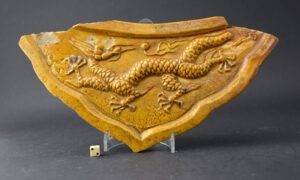
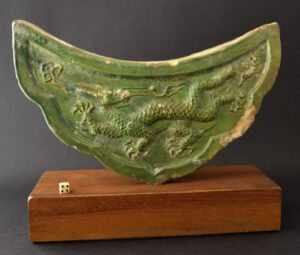
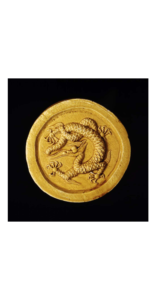
Asia: China: Jiangsu province. Acquisition number 1933,0317.1
